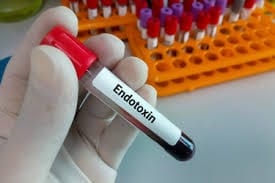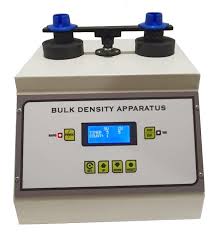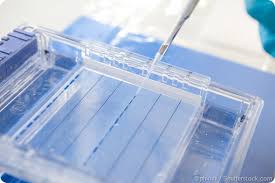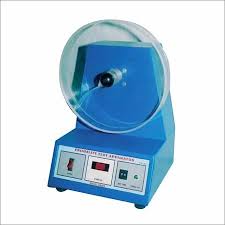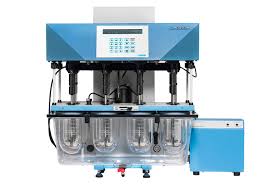|
Getting your Trinity Audio player ready... |
21 CFR Part 211: Current Good Manufacturing Practice (cGMP) for Finished Pharmaceuticals
21 CFR Part 211: The US Food and Drug Administration (FDA) sets standards to ensure the quality of pharmaceutical products through its regulations, particularly 21 CFR Part 211, which details the Current Good Manufacturing Practices (cGMP) that drug manufacturers must adhere to. These regulations are designed to ensure that drug products are consistently produced and controlled according to quality standards. They provide minimum requirements for manufacturing processes, facilities, and controls used in drug product production. The ultimate goal of these standards is to ensure that drugs are safe for consumer use, contain the correct ingredients in the proper strengths, and meet the specifications for their quality and purity.
Subpart A: General Provisions: 21 CFR Part 211
21 CFR 211.1 Scope
This part specifies the minimum cGMP standards for the production of drug products, excluding positron emission tomography (PET) drugs. These regulations apply to the manufacture, processing, and packaging of drug products intended for human or animal use.
Subpart B: Organization and Personnel
21 CFR 211.22 Responsibilities of the Quality Control Unit
A key aspect of ensuring drug product quality is the establishment of a dedicated quality control (QC) unit. This unit is responsible for the approval or rejection of all materials and processes related to drug products. The QC unit must evaluate components, drug product containers, closures, in-process materials, packaging materials, and labels. Moreover, it must ensure that the production records are carefully reviewed to detect and investigate any errors that may occur during manufacturing. Furthermore, the QC unit is responsible for approving or rejecting products that are manufactured, processed, packed, or held under contract by other companies.
The QC unit must also have adequate laboratory facilities to carry out necessary testing and evaluations. Written procedures outlining the responsibilities and procedures for the QC unit must be followed meticulously to maintain product safety and quality.
21 CFR 211.25 Personnel Qualifications
All personnel involved in the manufacturing, processing, packaging, or holding of drug products must have the proper education, training, and experience to perform their tasks. Training should be ongoing and cover both the specific duties of the employee and the relevant cGMP requirements. This ensures that employees are up to date with current regulations and know how to follow the written procedures associated with their role. Supervisors and managers responsible for overseeing production must also be adequately trained to ensure that the drug products meet safety, identity, strength, quality, and purity standards.
21 CFR 211.28 Personnel Responsibilities
Personnel involved in drug manufacturing must adhere to strict hygiene standards. Clean clothing, including protective apparel such as head, face, hand, and arm coverings, is mandatory to prevent contamination. Personnel must also maintain good sanitation and health habits. Employees who are found to have illnesses or open wounds that could jeopardize the safety or quality of the drug products must be excluded from handling materials until they are medically cleared. Access to certain areas of the manufacturing facility is restricted to authorized personnel to prevent contamination.
21 CFR 211.34 Consultants
Consultants hired to advise on drug manufacturing processes must have the necessary qualifications and experience. Their qualifications and the services they provide must be documented and maintained by the manufacturer.
Subpart C: Buildings and Facilities
21 CFR 211.42 Design and Construction Features
Buildings used for drug product manufacturing must be of appropriate size, design, and location to allow for efficient cleaning and maintenance. The design should minimize the risk of cross-contamination between materials and products. Separate areas should be designated for different stages of production, such as receiving, processing, storage, and packaging, to prevent mix-ups or contamination.
Facilities involved in aseptic processing must have smooth, easily cleanable surfaces, controlled temperature and humidity, and filtered air to ensure a sterile environment. Specialized systems for cleaning, disinfecting, and monitoring environmental conditions are necessary to maintain aseptic conditions.
21 CFR 211.44 Lighting
All areas of the manufacturing facility must be sufficiently illuminated to ensure that operations are conducted safely and with minimal risk of error.
21 CFR 211.46 Ventilation, Air Filtration, Air Heating, and Cooling
dequate ventilation is crucial to maintain the proper air quality and temperature in manufacturing areas. In environments where air contamination is a concern, proper filtration and exhaust systems must be in place. This is particularly important in areas where products like penicillin are manufactured, as separate air-handling systems are required to avoid cross-contamination with other drugs.
21 CFR 211.48 Plumbing
The plumbing system must supply potable water under continuous positive pressure and be free of defects that could lead to contamination. The water must meet the standards set by the Environmental Protection Agency’s (EPA) Primary Drinking Water Regulations. The plumbing system must also be designed to prevent contamination from sewage, with appropriate measures such as air breaks and mechanical devices to prevent back-siphonage.
21 CFR 211.50 Sewage and Refuse
Proper disposal of sewage, trash, and other refuse is essential for maintaining a sanitary environment. All refuse must be disposed of in a safe and hygienic manner to prevent contamination of the drug products.
21 CFR 211.52 Washing and Toilet Facilities
Adequate washing facilities, including hot and cold water, soap, and either air driers or single-use towels, must be provided for personnel. Clean toilet facilities must also be easily accessible from all working areas. These facilities are critical for maintaining good hygiene practices among employees.
21 CFR 211.56 Sanitation
Maintaining cleanliness within the manufacturing facility is essential for preventing contamination. The building must be free from infestation by rodents, insects, and other pests. Written procedures for sanitation must be followed, specifying the cleaning schedules, methods, and materials to be used. These procedures should also cover pest control measures, ensuring that any chemicals used, such as insecticides or fungicides, are applied in a way that does not jeopardize the safety of the drug products.
21 CFR 211.58 Maintenance
Facilities must be kept in good repair to prevent breakdowns that could affect product quality. Regular maintenance schedules and procedures should be in place to ensure that all equipment and systems continue to function effectively.
Subpart D: Equipment
21 CFR 211.63 Equipment Design, Size, and Location
The design, size, and location of equipment used in the manufacturing, processing, packaging, or holding of drug products must be appropriate for its intended use. This ensures that the equipment facilitates smooth operations and is easy to clean and maintain.
21 CFR 211.65 Equipment Construction
The equipment should be constructed from materials that do not react with, absorb, or alter the components or drug products being processed. Any substances used for operating the equipment, such as lubricants, must also be chosen carefully to avoid contamination.
21 CFR 211.67 Equipment Cleaning and Maintenance
Equipment must be cleaned and maintained regularly to ensure that it does not become a source of contamination. Written procedures must be established to outline the cleaning and maintenance protocols, including schedules and the materials used. This includes disassembling equipment when necessary to ensure thorough cleaning and maintenance, and making sure that any identification of previous batches is removed. Records must be kept of all maintenance, cleaning, and inspection activities to verify compliance.
In conclusion, 21 CFR Part 211 provides a comprehensive framework for ensuring that drug products are manufactured, processed, and packaged under the most stringent conditions of cleanliness, quality, and safety. By adhering to these regulations, drug manufacturers can help guarantee the safety, identity, strength, quality, and purity of their products, thereby ensuring public health is protected and that the products are consistent with their intended use. The emphasis on personnel training, sanitation, facility design, and rigorous equipment maintenance all play crucial roles in maintaining the integrity of pharmaceutical products throughout their lifecycle.
Section 211.68: Automatic, Mechanical, and Electronic Equipment
Automatic, mechanical, electronic, and other types of equipment, including computers and related systems, may be employed in the manufacturing, processing, packing, and storage of pharmaceutical drug products, provided that such equipment can consistently perform its intended function effectively. When this type of equipment is used, it must undergo regular calibration, inspection, or other forms of routine checking as outlined in a clearly defined, written program aimed at ensuring that the equipment continues to function as required. It is essential that the performance of these checks and calibration activities is thoroughly documented, and the records of these actions must be retained for future reference and accountability.
To maintain the integrity of pharmaceutical production processes, appropriate controls must be in place regarding the use of computer systems or related technologies. These controls are designed to ensure that any alterations to master production and control records, or other important records, can only be made by individuals who are explicitly authorized to do so. Furthermore, both the input and output data from these computer systems, including formulas and other critical records, must be subjected to checks to ensure accuracy. The frequency and depth of these verification procedures should correspond to the complexity of the system and its reliability. Additionally, a backup of all data entered into the system must be maintained, except in situations where certain types of data, such as calculations performed during laboratory analysis, are automatically eliminated by computerized processes. In such cases, a written record of the program used for these calculations must be kept, alongside the appropriate validation data.
To safeguard data integrity and minimize the risk of data loss, backup systems such as hard copies, duplicates, magnetic tapes, or even microfilm should be employed. These systems must be specifically designed to ensure that backup data is both accurate and complete, and that it is fully protected from accidental alteration, erasure, or loss.
In scenarios where automated equipment is used to fulfill operations outlined in various sections of 211, such as 211.101(c) or (d), 211.103, 211.182, or 211.188(b)(11), these systems can effectively meet the requirements of having one person perform a task while another person verifies it, provided that the equipment is operated in strict adherence to the outlined guidelines. In such cases, it remains essential that a second individual verifies that the equipment has executed the operation properly.
Section 211.72: Filters for Liquid Filtration
In the manufacturing, processing, or packing of injectable drug products intended for human consumption, the filters used for liquid filtration must be non-fiber-releasing to ensure the purity of the final product. If, however, it is impossible to manufacture such products without the use of fiber-releasing filters, additional precautions must be taken. Specifically, a secondary non-fiber-releasing filter with a maximum nominal pore size rating of 0.2 microns (or 0.45 microns where appropriate) must be employed to minimize any potential particle contamination in the injectable drug product. The use of filters containing asbestos is strictly prohibited to avoid any risk of contamination with harmful materials.
Subpart E: Control of Components and Drug Product Containers and Closures
Section 211.80: General Requirements for Handling Components and Containers
The manufacturing process of drug products involves strict control over the components and drug product containers and closures used in production. There must be written procedures detailing every aspect of the receipt, identification, storage, handling, sampling, testing, and approval or rejection of components and containers. These procedures should be sufficiently detailed to ensure that each step in the process is executed in a manner that prevents contamination and maintains the quality of the product. The written procedures should be followed diligently at all times.
Additionally, components and containers must be handled and stored in a manner that prevents contamination, and they should be protected from environmental factors that could compromise their integrity. For instance, components should be stored off the floor and arranged in a way that allows for proper cleaning and inspection.
Each batch of components and containers received must be identified with a unique code that corresponds to each lot in the shipment. This code serves as a critical reference for tracking the disposition of each lot and is used to document whether the lot is quarantined, approved, or rejected.
Section 211.82: Receipt and Storage of Untested Components
Upon receiving components, drug product containers, or closures, a visual inspection must be conducted to check for appropriate labeling, signs of damage, and contamination. Until these components are tested or examined and released for use, they must be placed under quarantine to prevent their use in production. The storage and handling of these components must adhere to the guidelines set forth in Section 211.80 to ensure compliance with quality control requirements.
Section 211.84: Testing and Approval or Rejection of Components
Before any lot of components, containers, or closures can be used in production, it must undergo thorough sampling, testing, and/or examination by the quality control unit to ensure compliance with established standards for identity, strength, purity, and quality. The number of containers sampled and the amount of material taken from each container must be based on specific criteria, including statistical factors, historical quality data from suppliers, and the amount of material needed for analysis and reserve.
For sampling procedures, it is necessary to clean containers as needed to prevent the introduction of contaminants. Sterile equipment and aseptic techniques should be employed where necessary, particularly when working with sterile materials. Containers that have been sampled must be clearly marked to indicate that they have been opened and sampled, preventing any confusion regarding their status.
Tests must include at least one test to confirm the identity of each component. In addition, each component must be examined for conformity with all relevant specifications for purity and strength. If testing is conducted by the supplier, the manufacturer must validate the supplier’s results at appropriate intervals to ensure the reliability of the test data.
Section 211.86: Use of Approved Components
Once components, containers, and closures are approved for use, they must be rotated so that the oldest stock is used first. This approach is crucial for minimizing the risks associated with the use of expired or outdated materials. Temporary deviations from this procedure are acceptable if they are justified and deemed appropriate.
Section 211.87: Retesting of Approved Components
Components, containers, and closures must be periodically retested or re-examined, particularly if they have been stored for extended periods or have been exposed to potentially damaging environmental factors, such as heat or air. The quality control unit is responsible for making decisions regarding retesting based on these conditions, ensuring that all materials maintain their identity, strength, quality, and purity.
Section 211.89: Control of Rejected Components
If components, containers, or closures are rejected, they must be clearly identified and placed under quarantine to prevent their use in manufacturing operations. These rejected materials must be segregated from other materials to avoid contamination or inadvertent use in production processes.
Section 211.94: Drug Product Containers and Closures
The containers and closures used for drug products must meet stringent requirements to ensure that they do not alter the safety, identity, strength, quality, or purity of the drug product. The materials used for containers and closures should not be reactive, additive, or absorptive in a way that could compromise the drug’s integrity.
The container closure systems must also be able to provide adequate protection against external factors that might lead to deterioration or contamination. In many cases, the containers and closures must be cleaned and sterilized, with specific processes in place to remove pyrogenic properties. These sterilization and depyrogenation processes must be thoroughly validated to ensure that the containers and closures are safe for their intended use.
Medical Gas Containers and Closures
Special requirements apply to medical gas containers and closures to ensure that they are safe for their intended use. These containers must be equipped with gas-specific outlet connections to prevent the accidental attachment of incompatible devices. Additionally, the labeling of these containers must be durable and resistant to fading, ensuring that it remains legible and intact throughout the product’s lifecycle. The materials used for coloring medical gas containers must also be resistant to atmospheric conditions, water, and other potential environmental factors.
Subpart F – Production and Process Controls
211.100 Written Procedures; Deviations:
The manufacture of drug products must adhere to rigorous standards to ensure they possess the identity, strength, quality, and purity as specified. To achieve this, written procedures for production and process controls must be implemented. These procedures should meet all the requirements outlined in this subpart, with the added stipulation that they undergo thorough review and approval by the appropriate organizational units, and particularly by the quality control unit.
All production and process control activities must be documented in real-time. In cases where there are deviations from the prescribed procedures, it is necessary to record and justify these deviations in a manner that explains the rationale behind such decisions. This is to ensure transparency and accountability in the manufacturing process.
211.101 Charge-In of Components:
The written production and control procedures must also address the specifics of incorporating raw materials into the manufacturing process, ensuring the drug product meets the required identity, strength, quality, and purity. The following key aspects should be included:
- The batch should be formulated to deliver no less than 100% of the specified active ingredient in the final drug product.
- The components used in drug manufacturing should be accurately weighed, measured, or subdivided. In cases where a component is transferred from one container to another, it must be clearly labeled with the following details:
- The name or code of the component.
- The receiving or control number.
- The weight or measure of the component in the new container.
- The batch for which the component was dispensed, including product name, strength, and lot number.
The operations involved in weighing, measuring, or subdividing components should be supervised by a qualified individual. Additionally, a second person must examine each component container to ensure it meets the following conditions:
- The component was released by the quality control unit.
- The weight or measure matches the specified amount in the batch production records.
- The container is properly labeled.
In cases where automated systems are used for weighing or measuring, a single individual may oversee the procedure as long as the steps are carried out correctly.
211.103 Calculation of Yield:
It is necessary to determine the actual yield and the percentage of the theoretical yield at the end of each significant phase of production. This ensures that the manufacturing process is on track and meets quality expectations. Yield calculations should be performed by one individual and independently verified by another. If automated systems are used to calculate the yield, the results must be verified by one person to ensure their accuracy.
211.105 Equipment Identification:
It is essential that all equipment used during the production of drug products, such as compounding containers, storage bins, and processing lines, is clearly labeled and identifiable. This ensures the equipment’s contents and phase in the manufacturing process are easily traceable.
Each major piece of equipment should be identified by a distinct number or code that is documented in the batch production record. For facilities where only one unit of certain equipment exists, the equipment’s name may be used instead of a code.
211.110 Sampling and Testing of In-Process Materials and Drug Products:
To ensure consistency and product integrity, there must be written procedures for sampling and testing during production. These procedures should monitor the process to detect any variability in the material characteristics or the drug product itself. Some of the key attributes that should be evaluated include:
- Tablet or capsule weight variation.
- Disintegration time.
- Homogeneity and uniformity of mixing.
- Dissolution rate and time.
- Clarity and pH of solutions.
- Bioburden levels.
Specifications for these characteristics should be established, consistent with the final drug product’s specifications, and based on previous process performance data or suitable statistical methods. In-process materials should be tested for identity, strength, quality, and purity, with approval or rejection granted by the quality control unit at relevant stages of production.
Rejected materials must be quarantined to prevent their unintended use in further manufacturing activities.
211.111 Time Limitations on Production:
Time limits should be established for the completion of each phase of production to maintain product quality. Any deviations from these time limits must be thoroughly justified and documented, provided such deviations do not compromise the integrity of the final product.
211.113 Control of Microbiological Contamination:
Written procedures should be in place to prevent microbiological contamination, especially in products that are not sterile but still need to be free of objectionable microorganisms. For sterile products, additional procedures must be implemented to prevent contamination, which includes validating all aseptic processing and sterilization methods.
211.115 Reprocessing:
There must be written procedures detailing the process for reprocessing batches that fail to meet the established standards or specifications. The reprocessing steps must be clearly defined to ensure the final batch will meet the required specifications. Reprocessing should never occur without approval from the quality control unit.
Subpart G – Packaging and Labeling Control
211.122 Materials Examination and Usage Criteria:
To maintain the integrity of drug products, written procedures must describe the receipt, identification, storage, handling, sampling, examination, and testing of packaging and labeling materials. These procedures must be followed carefully. Additionally, all packaging and labeling materials should be representatively sampled, examined, or tested when received, and before being used in the production process.
Any materials that meet the established specifications may be approved for use, while materials that do not meet specifications should be rejected to prevent their use in unsuitable operations.
Records for each shipment of packaging and labeling materials must be maintained, noting the receipt, examination or testing, and whether the materials were accepted or rejected.
Packaging materials for different drug products, strengths, dosage forms, or quantities must be stored separately with clear identification. Access to these materials should be restricted to authorized personnel. Obsolete and outdated materials must be destroyed.
211.125 Labeling Issuance:
Strict control measures should be applied to labeling materials issued for use. All materials must be carefully examined to confirm their identity and conformity with the specifications outlined in the batch production records. Additionally, any discrepancies between the number of finished products and the quantity of labeling materials issued must be thoroughly investigated.
Returned labeling should be properly stored to avoid confusion, with clear identification to prevent mixing up different types of labeling materials.
211.130 Packaging and Labeling Operations:
Clear written procedures should be in place to ensure the correct labels, labeling, and packaging materials are used in the manufacturing process. These procedures should prevent errors like mix-ups or cross-contamination during packaging and labeling operations by physically or spatially separating different drug products.
Filled containers that are set aside for labeling should be clearly identified to prevent mislabeling. This identification should be sufficient to distinguish the product’s name, strength, quantity, and lot number, even if not applied to each individual container.
Before beginning packaging and labeling operations, a thorough inspection of the packaging and labeling materials should be conducted to ensure suitability. Similarly, the packaging and labeling facilities should be inspected to confirm that they are free of materials from previous operations, and that unsuitable materials are not present.
The regulations regarding tamper-evident packaging for over-the-counter (OTC) human drug products are set by the U.S. Food and Drug Administration (FDA) under the Federal Food, Drug, and Cosmetic Act. The purpose of these regulations is to ensure the security and safety of OTC drug packaging, improving the integrity of drug products and reassuring consumers of their safety. These requirements apply to OTC drug products that are available for retail sale, with specific exceptions, such as dermatological, dentifrice, insulin, and lozenge products. In situations where a product is not packaged according to the outlined tamper-evident standards or is improperly labeled, it is considered adulterated or misbranded under sections 501 and 502 of the Act.
Tamper-Evident Packaging Requirements
The tamper-evident packaging regulations are designed to minimize the risks of tampering and to alert consumers when tampering has occurred. Here are the key details regarding these requirements:
- General Packaging Requirements: Every manufacturer or packer who packages an OTC drug product (excluding specific types like dermatological, dentifrice, insulin, or lozenge products) for retail sale must ensure that the product is packaged in a tamper-evident package. A tamper-evident package includes one or more features that, if compromised, can clearly show visible evidence of tampering. These features might include seals, shrink wraps, or other similar barriers that are designed in a way that would be difficult to replicate using commonly available materials or processes.
To further ensure that the package cannot be easily tampered with, the design of the package must be distinctive. This can involve using identifiable characteristics like logos, patterns, trademarks, or images that are unique to the packaging. The tamper-evident feature is intended to remain intact during the manufacturing, distribution, and retail phases to avoid any accidental or malicious tampering.
- Additional Requirements for Gelatin Capsules: Specifically for two-piece, hard gelatin capsules, an acceptable tamper-evident technology must be applied. These products require sealing in a manner that guarantees that any tampering will be immediately noticeable, further enhancing consumer safety.
Labeling Requirements
Tamper-evident labeling is crucial for ensuring transparency and alerting consumers to the protective features of the packaging. The following labeling requirements are stipulated:
- Identification of Tamper-Evident Features: Retail packages of OTC drug products that fall under these regulations must have a clear statement identifying the tamper-evident features employed. This statement must include any technology used to seal capsules and indicate all tamper-evident characteristics. The labeling must be prominently placed on the package and remain intact even if the tamper-evident feature is breached or removed.
For example, if the packaging uses a shrink band as a tamper-evident feature, the labeling statement might read, “For your protection, this bottle has an imprinted seal around the neck,” ensuring that consumers can immediately identify that the product is tamper-evident.
Exemption Requests
Manufacturers or packers may request exemptions from these tamper-evident packaging and labeling requirements. To do so, they must submit a citizen petition to the FDA, clearly marked as a “Request for Exemption from the Tamper-Evident Packaging Rule.” This petition must include:
- The name of the drug product or class of drugs, and a list of specific products within that class.
- The reasons why compliance with the tamper-evident packaging or labeling requirements is unnecessary or cannot be achieved.
- A description of any alternative measures the manufacturer has implemented or plans to implement to minimize the risk of tampering or malicious adulteration.
- Other supporting information justifying the exemption request.
Notification of Packaging and Labeling Changes
Manufacturers who hold approved new drug applications for OTC drug products are required to notify the FDA when making changes to packaging or labeling to comply with these tamper-evident packaging regulations. The necessary changes to packaging or labeling may be made before receiving FDA approval, in line with the provisions of 314.70(c) of the relevant chapter. However, if the changes involve sealing capsules, prior approval from the FDA is necessary, as outlined under 314.70(b) of the chapter.
Poison Prevention Packaging Act
The tamper-evident packaging regulations do not alter any requirements outlined under the Poison Prevention Packaging Act of 1970, which sets additional rules for special packaging of certain products to prevent accidental poisoning, particularly in children.
Drug Product Inspection
The FDA mandates specific procedures for the inspection of packaged and labeled drug products to ensure compliance with the required packaging and labeling standards. During the finishing operations of drug manufacturing, packaged products are examined to confirm they bear the correct labeling. A representative sample is collected from the lot to be visually inspected for appropriate labeling. These examinations and their outcomes must be documented in the batch production or control records for quality assurance purposes.
Expiration Dating
To ensure the safety and efficacy of OTC drug products throughout their shelf life, they must bear an expiration date. This expiration date is determined based on stability testing and must meet the following criteria:
- The expiration date must reflect any specific storage conditions, such as temperature, humidity, or light, that are required to maintain the product’s identity, strength, quality, and purity.
- If the product requires reconstitution before use, the expiration date must cover both the reconstituted and unreconstituted versions.
- Homeopathic drug products and allergenic extracts labeled “No U.S. Standard of Potency” are exempt from the expiration dating requirements. Additionally, new drug products used in investigational trials are exempt, provided that they meet appropriate stability standards and specifications as established by stability studies conducted during clinical investigations.
- The FDA has published a proposed exemption for certain OTC drug products in the Federal Register, which would temporarily exempt products without dosage limitations but stable for at least three years from the expiration dating requirements.
Warehousing and Distribution Procedures
Proper storage and distribution of drug products are critical to maintaining their integrity and ensuring their safety. The FDA requires manufacturers to establish written procedures that govern the warehousing and distribution of drug products. These procedures must include:
- Warehousing Procedures: Drug products must be quarantined before they are released by the quality control unit. Additionally, drug products must be stored under conditions that prevent any degradation of their identity, strength, quality, or purity. Temperature, humidity, and light conditions should be carefully controlled to prevent any adverse effects on the drug products.
- Distribution Procedures: Distribution procedures must specify that the oldest approved stock of a drug product is distributed first, although temporary deviations from this rule are permitted if justified. A system must be in place to easily trace and determine the distribution of each drug product lot, which is essential in the event of a product recall.
Laboratory Control Requirements
The FDA sets stringent guidelines for laboratory controls to ensure that drug products meet appropriate standards of identity, strength, quality, and purity. These controls are essential for maintaining product consistency and safety. The laboratory controls must include:
- Specifications and Sampling Plans: Specifications, standards, and sampling plans must be established to confirm that all components, containers, closures, and labeling used in manufacturing, processing, or packaging comply with the necessary standards. These components must undergo rigorous testing to ensure their quality before they are used in the production of drug products.
- Testing for In-Process Materials: All in-process materials used in the production of drug products must also conform to established specifications. This ensures that the materials used are of appropriate quality before they become part of the final product.
- Instrument Calibration: Instruments and equipment used in testing must be calibrated at appropriate intervals to ensure their accuracy and precision. A written program should govern the calibration process, specifying the limits for accuracy and precision and detailing procedures for remedial actions if the equipment fails to meet these limits.
Testing and Release for Distribution
Before any drug product is released for distribution, it must undergo laboratory testing to confirm that it meets the final specifications. This testing includes confirming the identity and strength of active ingredients and ensuring that no objectionable microorganisms are present. Sampling and testing procedures must be documented, and the quality control unit must establish acceptance criteria to ensure that the drug product meets all required specifications. Any drug product that fails to meet these standards is subject to rejection or reprocessing before it can be released for distribution.
In conclusion, these regulations set forth by the FDA are designed to ensure the integrity, safety, and efficacy of OTC drug products. Tamper-evident packaging, proper labeling, expiration dating, and stringent laboratory controls are all part of a broader effort to safeguard consumers and ensure that drug products meet the highest standards of quality and safety. These measures help to prevent tampering, provide clear information to consumers, and ensure that drug products remain safe and effective throughout their shelf life.
Revised Text: Stability Testing and Regulatory Guidelines for Pharmaceutical Products
Stability Testing Program
A comprehensive written stability testing program is essential for evaluating the stability of drug products. The results from such testing play a crucial role in determining proper storage conditions and establishing accurate expiration dates. The written stability program must be diligently followed, and it should encompass several key elements:
- Sample Size and Test Intervals: The program should specify the number of samples to be tested and the intervals at which testing will take place. These intervals and sample sizes must be based on statistical principles to ensure the stability data is reliable and representative.
- Storage Conditions for Samples: The program should outline the exact conditions under which the samples will be stored during the testing process. This ensures that the conditions mimic real-world scenarios, allowing for the accurate assessment of the drug product’s stability.
- Test Methods: The testing should be conducted using reliable and scientifically valid methods that are tailored to each specific attribute being tested.
- Container-Closure System Testing: It is imperative that the stability testing of drug products be carried out using the same container-closure system in which the product will be marketed. This helps ensure that any potential degradation due to packaging materials is accurately detected.
- Reconstitution Testing: For drug products that require reconstitution before dispensing, stability testing must be conducted both on the unprepared product (as described in the labeling) and after reconstitution. This helps determine how the product’s stability is affected by the reconstitution process.
The testing program must include testing of an adequate number of batches to determine the appropriate expiration date. A record of all testing data must be maintained for reference. Additionally, accelerated stability studies can be used to estimate expiration dates if full shelf-life data is not yet available. In cases where accelerated studies are relied upon, it is essential to conduct further testing at regular intervals until the expiration date is validated based on actual stability studies.
Stability Testing for Homeopathic Drug Products
For homeopathic drug products, the stability evaluation process may differ slightly:
- A written assessment must be performed, focusing on the compatibility of the ingredients within the product. This evaluation can also incorporate marketing experience to establish that the product does not degrade within its intended use period.
- Stability testing must be conducted using the same container-closure system as the product’s marketed packaging. This ensures consistency and reliability in stability findings.
Allergenic extracts labeled as “No U.S. Standard of Potency” are exempt from the stability testing requirements outlined in this section.
Special Testing Requirements
In addition to general stability testing, certain types of drug products require special testing to ensure their safety and efficacy:
- Sterile and Pyrogen-Free Products: For any drug product marketed as sterile and/or pyrogen-free, appropriate laboratory testing must be performed to confirm compliance with these specifications. The testing procedures must be well-documented and strictly followed.
- Ophthalmic Ointments: Ophthalmic ointments require specific testing to ensure the absence of foreign particles or harsh substances. These tests must also be clearly outlined in written procedures.
- Controlled-Release Dosage Forms: Drug products in controlled-release forms must undergo rigorous testing to ensure the release rate of each active ingredient meets the specified requirements. These procedures must be documented and strictly adhered to.
Reserve Samples
For every drug product, reserve samples of the active ingredients and finished products must be carefully retained. These reserve samples should be representative of each lot in each shipment and are intended for future testing to ensure continued product quality. The reserve samples must be stored under the conditions specified on the product’s labeling.
The amount of the reserve sample should be at least double the quantity necessary to perform all required tests, excluding sterility and pyrogen tests. These samples must be stored for varying lengths of time depending on the type of product:
- For most drug products, reserve samples should be kept for at least one year after the expiration date of the last lot of the drug product containing the active ingredient.
- For radioactive drugs (excluding nonradioactive reagent kits), reserve samples must be retained for at least:
- Three months after the expiration date for products with a 30-day or less expiration period.
- Six months for products with an expiration period longer than 30 days.
- For OTC drug products that are exempt from bearing expiration dates, reserve samples must be retained for three years after the last lot has been distributed.
These samples should be stored in the same type of container-closure system used for marketing or one with similar characteristics. At least once a year, reserve samples must be visually inspected for signs of deterioration, unless doing so would affect the sample’s integrity. Any evidence of deterioration must be investigated, and the results recorded and maintained in accordance with the regulations.
Laboratory Animal Care
Animals used in testing pharmaceutical components, in-process materials, or finished drug products must be housed and cared for in a manner that ensures their suitability for testing purposes. Each animal must be properly identified, and detailed records must be maintained that document their history and usage in tests.
Penicillin Contamination
If there is a possibility that a non-penicillin drug product has been exposed to contamination from penicillin, the product must undergo testing for penicillin residues. If detectable levels of penicillin are found using the approved detection methods, the product must not be marketed. This is crucial in preventing cross-contamination and ensuring that products are safe for all consumers, including those with penicillin allergies.
Subpart J—Records and Reports
General Record-Keeping Requirements
Pharmaceutical manufacturers must retain records associated with the production, control, and distribution of drug products. These records should be maintained for at least one year after the expiration date of the product batch, or for three years for certain OTC products that are exempt from expiration dating. These records must be readily accessible for inspection by authorized personnel at the facility where the activities took place.
In addition to batch-specific records, all records related to the components, containers, closures, and labeling of the drug products must also be retained for the same period. These records must be kept in a way that they can be easily retrieved and inspected during regulatory audits. They can be stored in various formats, including paper, photocopies, microfilm, or electronic records.
Records must be available for inspection, and any records stored electronically must be easily accessible for review. If records are maintained electronically, they should be capable of being reproduced as hard copies for inspection if necessary.
Evaluation of Quality Standards
Written procedures must be established and followed to ensure that the quality standards of each drug product are reviewed at least annually. These reviews should involve examining a representative sample of batches, including both approved and rejected products. Records of complaints, recalls, and any investigations related to the product should also be reviewed as part of this process.
These reviews should be documented and include a comprehensive analysis of whether any changes to the product’s specifications or manufacturing processes are necessary. If the responsible officials are not personally involved in any investigations, they must be notified in writing of the results of such actions, including investigations, recalls, or regulatory actions initiated by the FDA.
Equipment Cleaning and Maintenance Logs
Manufacturers must maintain detailed cleaning and maintenance logs for all major equipment used in production. These logs should include the date, time, and specific product or lot number processed with each piece of equipment. For equipment dedicated to a single product, records are not required for each batch, provided that the batches follow a numerical sequence.
Records of cleaning, maintenance, and use must be signed and dated by the individuals responsible for performing or verifying the work. These logs should be maintained in chronological order, allowing for easy tracking of equipment history.
Component, Container, Closure, and Labeling Records
Records related to the procurement and use of components, drug product containers, closures, and labeling must be maintained and should include the following details:
- The identity and quantity of each shipment or lot of components and materials, including the supplier’s name and lot numbers.
- Test results and conclusions for each shipment or batch.
- Inventory records for components, allowing for tracking of their use in specific batches.
- Documentation of the review of labels and labeling for compliance with specifications.
Master Production and Control Records
Master production and control records serve as the blueprint for manufacturing drug products. These records must be prepared and signed by the responsible individuals, ensuring that the product is consistently produced to the established specifications. These records must include:
- The name, strength, and dosage form of the product.
- A detailed list of ingredients, including the quantity of each per dosage unit.
- Complete manufacturing instructions and specifications.
- A description of the packaging materials and labeling, along with the responsible individuals’ approval signatures.
These records must be reviewed regularly to ensure the consistency and quality of drug products produced across different batches.
The regulations governing the production, control, testing, and distribution of pharmaceutical products are essential to ensure the safety, efficacy, and quality of drugs. The set of procedures established for the documentation of the various stages of drug production is aimed at maintaining stringent control over the entire production process. This includes ensuring the drug is manufactured in a consistent, reliable manner and meets the established specifications.
1. Batch Production and Control Records
Each batch of drug product produced must have a corresponding batch production and control record. These records are critical for tracking and documenting every aspect of the production process, from start to finish. This ensures that each batch produced is consistent with the approved specifications and standards. The documentation must include an accurate reproduction of the master production or control record. This reproduction must be checked for accuracy, signed, and dated by the responsible personnel.
These records must detail the following key aspects:
- Master Record Reproduction: A precise reproduction of the master production or control record is crucial. The document must be checked for accuracy and signed by the responsible individuals, ensuring all aspects of the production process are correct.
- Production Steps: The records must detail each significant step in the production process, including the manufacturing, processing, packing, and holding of the batch. Specifics such as the date each step was completed, the identity of the equipment used, and the materials involved are essential.
- Materials and Components: Documentation must specify the materials used during production, such as components and in-process materials. This includes the specific identification of each batch of components used and their respective quantities, measured in terms of weight or volume.
- Control and Testing Results: In-process and laboratory control results must be documented to verify the quality of the product. Inspection of the packaging and labeling area before and after use must also be recorded, ensuring the integrity of the packaging process.
- Yield and Production Data: It is crucial to document the actual yield at various stages of processing, alongside the percentage of theoretical yield, providing insights into the efficiency of the process.
- Labeling Control Records: Complete labeling control records, including specimens or copies of all labeling used, must be maintained. The labeling controls ensure the proper packaging of the product and that all labeling complies with regulatory requirements.
- Personnel Involvement: The identities of the individuals performing, supervising, or checking each significant step must be recorded. This includes identifying individuals involved in the use of automated equipment, ensuring accountability throughout the production process.
- Investigations: If discrepancies or failures occur, a detailed investigation must be conducted. These investigations must follow the guidelines set out in section 211.192 and document the findings and follow-up actions taken.
These detailed records not only facilitate a transparent and traceable production process but also serve as a critical reference in the event of a product issue or recall. They help to demonstrate that each step of production has been performed in accordance with established procedures, ensuring the integrity of the drug product.
2. Production Record Review
Before a batch of drug products is released or distributed, all production and control records, including those related to packaging and labeling, must undergo a review by the quality control unit. This review ensures that the product complies with all approved written procedures. If there are any discrepancies, such as a batch failing to meet its specifications or exceeding the acceptable percentage of theoretical yield, a thorough investigation must be conducted.
Any unexplained discrepancy, whether or not the batch has already been distributed, must be fully investigated. This investigation will include not only the affected batch but also other batches of the same drug product or related products that may have been impacted by the issue. A written record of the investigation must be kept, including conclusions and any follow-up actions. This helps to ensure that any problems are rectified, and appropriate actions are taken to prevent future issues.
3. Laboratory Records
Laboratory records are equally critical to the production process, as they document all tests performed on drug products to ensure they meet the required specifications. These records must include the following information:
- Sample Description: The laboratory record must describe each sample received for testing, including details such as the sample’s source, quantity, lot number, and the dates the sample was taken and received.
- Testing Methods: The methods used for testing must be clearly stated. If the methods are derived from recognized sources like the United States Pharmacopeia or other official references, it must be noted. The suitability of each method used should also be verified under actual conditions of use.
- Data from Tests: The complete data obtained from each test must be documented, including any graphs, charts, and spectra produced by laboratory instruments. This ensures that the test results are fully traceable and verifiable.
- Results and Compliance: The results of each test must be compared with the established standards for the drug product. This includes verifying the identity, strength, quality, and purity of the sample tested.
- Signature of Analysts: Both the person performing the test and the person reviewing the results must sign the record, ensuring accountability and accuracy.
- Modifications and Calibration: If any modifications to testing methods are made, detailed records must be kept, including the reason for the modification and evidence that the new method produces reliable results. Similarly, all calibration activities for laboratory instruments and devices must be thoroughly documented.
In addition to documenting the results of standard testing, records must also include data from stability testing, which helps to determine the shelf life and long-term viability of drug products.
4. Distribution Records
Distribution records are vital to tracking the movement of drug products from the point of manufacture to the point of sale. These records must include essential information such as the drug product’s name, strength, dosage form, and lot or control number. The name and address of the consignee, as well as the date and quantity of the drug shipped, must also be documented.
For certain drug products, such as compressed medical gases, distribution records may not need to include lot or control numbers. However, for other products, maintaining a record of the batch number is crucial for traceability and accountability.
5. Complaint Files
Complaints related to drug products must be handled according to written procedures that ensure compliance with regulatory standards. These procedures must include a review by the quality control unit to determine if the complaint represents a failure to meet specifications. If necessary, an investigation must be initiated to determine the cause of the problem.
Records of complaints must be maintained and must include information such as the product name, lot number, the nature of the complaint, and the response provided. In cases where an investigation is conducted, the findings must be documented and retained. These records must be kept for at least one year after the expiration date of the drug product or for one year after the complaint was received, whichever is longer. This ensures that any issues with a product are thoroughly investigated and that corrective actions are taken if necessary.
6. Returned and Salvaged Drug Products
The handling of returned or salvaged drug products must be carefully controlled to prevent the distribution of products that may be unsafe, ineffective, or of questionable quality. Drug products that are returned must be identified and stored separately. If the returned product’s condition raises doubts about its safety or quality, it should be destroyed unless proven otherwise through testing.
If a returned drug product is found to meet the appropriate standards, it may be reprocessed to ensure it is safe and effective for future use. Detailed records of the return process, including the product’s lot number, reason for return, and final disposition, must be maintained. If the return of a drug product is linked to a specific batch issue, a full investigation must be conducted to ensure that no other products are affected.
7. Drug Product Salvaging
Under certain circumstances, drug products that have been subjected to improper storage conditions may be salvaged and returned to the marketplace. However, salvaging operations should only occur if there is clear evidence from laboratory tests that the product still meets all applicable standards. Additionally, the premises where the products were stored must be inspected to ensure that no improper storage conditions occurred.
In cases where it is unclear whether the drug products were subjected to improper conditions, salvaging operations should only proceed with strong evidence that the product is safe, effective, and of good quality. Organoleptic examinations, such as sensory testing, can be used as supplemental evidence, but laboratory tests and assays remain the primary method of verifying a product’s suitability for reuse.
Conclusion
The regulations outlined for batch production, control records, laboratory testing, distribution, and complaint management are critical in maintaining the safety, efficacy, and quality of pharmaceutical products. These comprehensive procedures ensure that drug products are consistently manufactured according to established specifications, and any potential issues are promptly identified and addressed. By adhering to these guidelines, pharmaceutical manufacturers can provide reliable, high-quality products to consumers while meeting regulatory requirements and maintaining the integrity of the drug production process.




